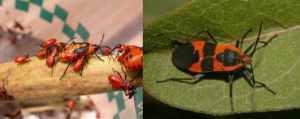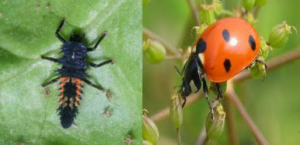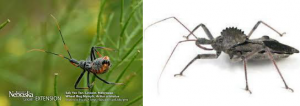READY TO GET STARTED?
REQUEST A FREE ESTIMATE
Fill out the form below or call (888) 466-7849 for a free, no-obligation estimate.
All creatures are capable of fantastic feats, some of which we are accustomed to. Birds fly, fish swim and bees buzz along as they collect nectar. We’re so used to certain animals doing certain things that we marvel when they do something unexpected. After all, wouldn’t it shock you if animals could talk like humans? That is, until you have a conversation with a parrot. Below we feature some creatures you know well and finally get an explanation for how the neat tricks they do!
Squirrels Flying
Flying squirrels aren’t as a familiar as their red or gray sisters because when you’re likely to be sleep when they tend to be out. In North America there are two species of flying squirrel – the northern flying squirrel and the southern flying squirrel. Contrary to what their name suggests, flying squirrels don’t fly because they don’t have wings. They do however, have web-like folds of skin known as patagium which when get taught when they stretch their bodies out and help them glide from high altitudes.
Snakes Swimming
Though some snakes are known specifically for being in the water, all snakes can swim. This may boggle the mind because these creatures have no arms or fins! However, they glide gracefully through the water by moving their body laterally, as if twisting into an ‘S’ shape. These movements start at the head and continue through its body, allowing them to exert a force backwards against the water, effectively moving their bodies forward. Those we typically refer to as water snakes have flatter bodies which make it more efficient for them to swim.
Bugs Walking on Water
Scientists used to believe that bugs secreted a wax on their legs that helped them take advantage of the surface tension of water. Now they believe that insect’s legs have microscopic hairs that trap air bubbles to allow them to float.
Spring is a time when everything comes to life, blooming into an array of lovely colors. You’ll see flowers that are pink and purple, baby bunnies that are tan or gray and insects that are red and black. Just like every other little life form emerging this time of year, insects can also be a variety of colors and it’s important not to get them confused. Some bugs you might spot frequently are of the Georgia Bulldog variety – red and black spots, stripes and even a combination of both.
If any of these insects or other pests become too much of nuisance, Northwest Exterminating has the expertise and knowledge to take care of your bug problems. Our Director of Pest Services Adam Vannest has provided some information about these bugs that will help you know the difference and what measures to take against them.
– Overwinters
– Feeds on aphids
– Control Measures: exclusion and vacuuming for long-term prevention. When necessary, chemical contact treatments can knock down a population
Box Elder Bug
– Overwinters
– Female: Box Elder trees and Silver Maple trees serve as the primary host plant
– Control Measures: Exclusion and a contact/residual application around the foundation and base of host plant
Milkweed Bug
 – Found in gardens on Milkweed plants or around shelled sunflower seeds
– Found in gardens on Milkweed plants or around shelled sunflower seeds
– Control Measures: Over-the-counter garden insecticides
Leaf-Footed Stink Bug
– Feeds on a wide variety of host plants
– Besides birds, they do not have too many natural predators due to their taste and smell
– Control Measures: Over-the-counter insecticides for garden areas. Outside of the garden, any contact or residual product labeled for stink bugs
Wheel Bug
– Semicircular cogwheel-like crest on its thorax
– Feeds on a wide variety of insects including caterpillars, beetles, aphids
Control Measures: Prevention is the key! All plants should be inspected before they enter the home. Exclusion should be performed for long-term prevention. All vegetation should be trimmed away from the home, at least one foot. Pesticides are rarely needed
Spring is a time when everything comes to life, blooming into an array of lovely colors. You’ll see flowers that are pink and purple, baby bunnies that are tan or gray and insects that are red and black. Just like every other little life form emerging this time of year, insects can also be a variety of colors and it’s important not to get them confused. Some bugs you might spot frequently are of the Georgia Bulldog variety – red and black spots, stripes and even a combination of both.
If any of these insects or other pests become too much of nuisance, Northwest Exterminating has the expertise and knowledge to take care of your bug problems. Our Director of Pest Services Adam Vannest has provided some information about these bugs that will help you know the difference and what measures to take against them.
Lady Bug
 – Beneficial insect
– Beneficial insect
– Overwinters
– Feeds on aphids
– Control Measures: exclusion and vacuuming for long-term prevention. When necessary, chemical contact treatments can knock down a population
Box Elder Bug
– Overwinters
– Female: Box Elder trees and Silver Maple trees serve as the primary host plant
– Control Measures: Exclusion and a contact/residual application around the foundation and base of host plant
Milkweed Bug
 – Found in gardens on Milkweed plants or around shelled sunflower seeds
– Found in gardens on Milkweed plants or around shelled sunflower seeds
– Control Measures: Over-the-counter garden insecticides
Leaf-Footed Stink Bug
– Feeds on a wide variety of host plants
– Besides birds, they do not have too many natural predators due to their taste and smell
– Control Measures: Over-the-counter insecticides for garden areas. Outside of the garden, any contact or residual product labeled for stink bugs
Wheel Bug

– Semicircular cogwheel-like crest on its thorax
– Feeds on a wide variety of insects including caterpillars, beetles, aphids
Control Measures: Prevention is the key! All plants should be inspected before they enter the home. Exclusion should be performed for long-term prevention. All vegetation should be trimmed away from the home, at least one foot. Pesticides are rarely needed
If you’re a lover of tasty treats and creative costumes, then your favorite celebration is right around the corner! Halloween is thought to have originated with the ancient Celtic festival of Samhain, when people would light bonfires and wear costumes to ward off roaming ghosts. This festival celebrated their new year on November 1 and marked the end of summer and harvest as the dark, cold winter began. Over time, Celtic areas became overtaken by the Romans and many Roman Catholic and Celtic traditions were intertwined. In the 8th century, Pope Gregory III designated October 31st as All Hallow’s Eve, the day before a Catholic holiday known as All Saint’s Day.
Though today’s celebration is more about dressing up and having a good time, many of the older traditions and superstitions about Halloween remain the same. One of the superstitions regarding Halloween is that anyone who has seen a spider on this evening has encountered the spirit of a loved one watching over them. In actuality, you probably will not see too many spiders around this time because most of them have already laid eggs and died. In fall and winter, spiders might be found in the dark corners of your home or basement as they prepare to begin laying eggs again. If the site of these creatures troubles you, Northwest Exterminating has experienced technicians who can scare these pests away from your home!
Northwest Exterminating can take care of pests in the home for you, but if you would like to embrace pests in a different way, maybe some of these costumes will do the trick!
Melissa Brown
[email protected]
Sources:
http://www.history.com/topics/halloween
Insects and other pests may inspire a myriad of thoughts but fashion likely does not come to mind. Still, the array of colors and shapes found in the insect world may already have invaded your closet! Take a look at these bug inspired fashions below that are crawling down the hottest runways.
If these outfits don’t pique your interest, perhaps these jewelry options below may intrigue you. Bug jewelry comes not only in artful bug designs but also feature actual insects!
Bugs are “in” this season but you don’t want them “in” your home. Call Northwest Exterminating or visit www.callnorthwest.com to learn how we can help you. If you want to see more artsy insect creations, please visit us on our Pinterest page.
Melissa Brown
[email protected]